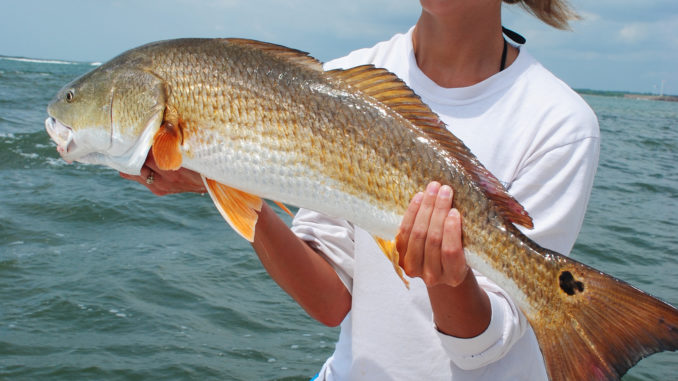
The Charleston Harbor area is arguably the center of South Carolina’s coastal fishery, and in more ways that just geography.
Sure, it’s located about midway between the Palmetto State’s borders with North Carolina and Georgia, and having one of South Carolina’s largest metropolitan areas right on is doorstep adds a certain level of fishing attention to the waters of the harbor, the rivers that feed it and the adjoining marshes.
But it’s the fishing, not the attention, that separates Charleston from the rest of the state. In a word, it’s excellent, and June is the month that really kicks off the season. The sheepshead and flounder have returned, the trout are at the peak of their activity, and the redfish — big and small — are on the feed.
Capt. Chuck Griffin of Aqua Adventures Fishing Charters does battle with most of the fish that show up in the harbor on a regular basis, from the aforementioned species to jacks, sharks, black sea bass, Spanish mackerel and tarpon — a few of which show up toward the end of the month.
Some of the harbor’s hotspots are so well-known that they’ve got names, principal among them the “grillage” and the “dynamite hole,” but they aren’t the only places to catch fish. The outside of the harbor is lined with a pair of rock jetties, each almost three miles long, that heavily influence fish and fishing patterns, especially with respect to tide and current.
Griffin (843-860-1664), who fishes out of Isle of Palms Marina, has fished the harbor and its surroundings in every season, on every tide, and he’s uniquely qualified to help newcomers learn how to find their way around — and bring home a few fish to boot.
Dynamite Hole
Back in the early 1800s, before the construction of the rock jetties that line the outside of the harbor, the shipping channel ran along the south side of the harbor, close to the eastern end of Fort Sumter. The channel was apt to silt in with sand from Sullivan’s Island on the north side of the harbor, and dynamite was used to keep the channel clear of obstructions, hence, the “dynamite hole.”
The dynamite hole, marked by a buoy, is at the junction where the inshore, submerged end of the South Jetty meets the long stretch of rocks that is visible above the waterline except on extremely high tides. The currents now keep the “hole” scoured out, and it’s a favorite spot for bull redfish (and sharks) during the summer. The key is finding the area where the old channel ledge meets the scoured-out hole.
Griffin likes to anchor up on the “inside edge of the hole and fish a live menhaden on a Carolina rig on the bottom, especially on a falling tide. Reds, sharks and even flounder will cruise the drop-off, feeding on whatever the current sweeps past.
This article is part of the Salwater Series: Charleston Harbor feature in the June issue of South Carolina Sportsman, which is now on newsstands. Digital editions also can be downloaded right to your computer or smartphone.
Be sure to subscribe to ensure you don’t miss a single information-packed issue of South Carolina Sportsman.





Be the first to comment